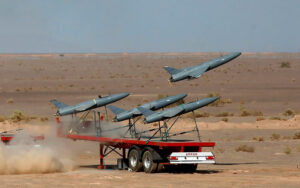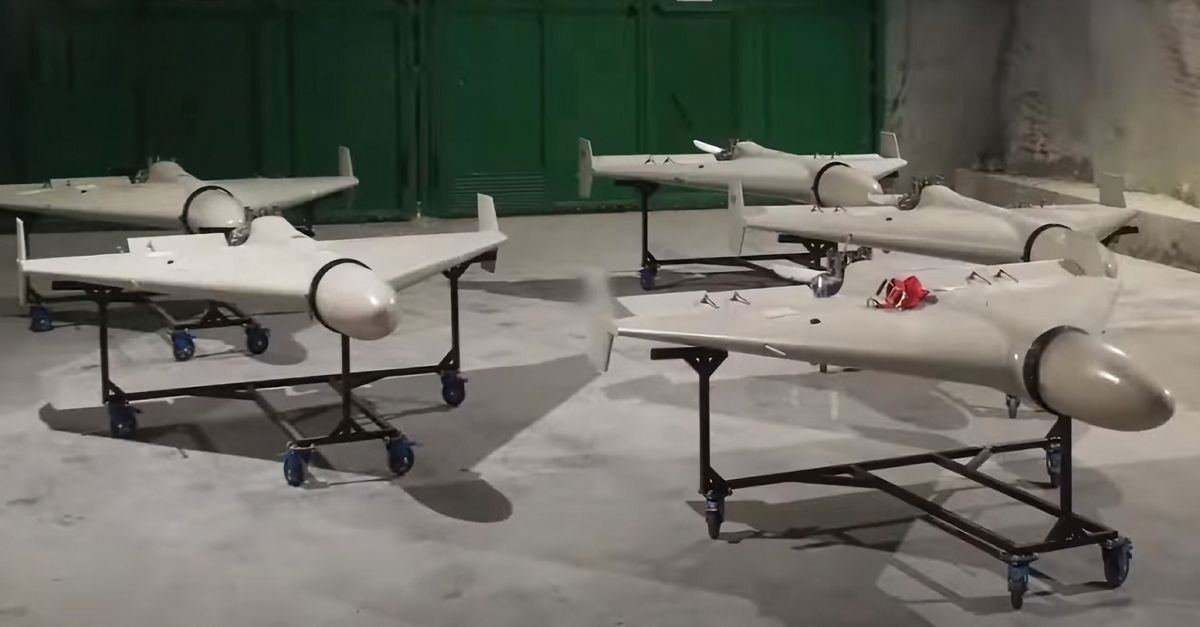Russia’s Shocking Drone Attack on Kyiv: Unleashing the Power of the Shahed 136
On Sunday, May 29, 2023, Russia launched a massive drone attack on Kyiv, the capital of Ukraine. The attack was the largest of its kind since the start of the war in February 2022.
The Russian military said that it launched 54 drones at Kyiv, of which 52 were shot down by Ukrainian air defenses. The two drones that made it through the air defenses caused significant damage, including to a residential building and a military base.
The Ukrainian government said that one person was killed, and several others were injured in the attack. The government also said that the attack caused significant damage to infrastructure, including roads, bridges, and power lines.
The Russian government said that the attack was a response to Ukrainian attacks on Russian territory. The government also said that the attack was intended to deter Ukraine from continuing its offensive against Russian forces.
Russian Perspective
The Russian government has defended its attack on Kyiv, saying that it was a necessary response to Ukrainian provocations. The government has also said that the attack was carried out with precision and that no civilians were harmed.
The Ukrainian government has denied that it has carried out any attacks on Russian territory. The government has also said that the Russian attack on Kyiv was a deliberate attempt to terrorize the civilian population.
The international community has condemned the Russian attack on Kyiv. The United States, the European Union, and NATO have all called on Russia to cease its attacks on civilian targets.
The attack on Kyiv is a reminder of the brutality of the war in Ukraine. It is also a reminder of the importance of continuing to support Ukraine in its fight for freedom.
About Shahed 136 Drones that were used in the attack
The HESA Shahed 136 is an Iranian-unmanned combat aerial vehicle (UCAV) developed by the Shahed Aviation Industries Research Center. The aircraft is a small, slow-flying, propeller-powered drone that is designed for use in the kamikaze role. It is believed to be based on the Israeli Pioneer UAV, which was captured by Iran during the Iran–Iraq War.

The Shahed 136 has a cropped delta-wing shape with a central fuselage and stabilizing rudders at the tips. The nose section contains a warhead estimated to weigh 30–50 kilograms (66–110 lb). The engine sits in the rear of the fuselage and drives a two-bladed propeller in a “pusher” arrangement. The aircraft has a maximum speed of 185 kilometers per hour (115 mph) and a range of up to 2,500 kilometers (1,600 mi).
The Shahed 136 is believed to be used by the Islamic Revolutionary Guard Corps (IRGC) for a variety of missions, including target designation, reconnaissance, and suicide attacks. The aircraft has been used in combat in Syria and Iraq, and has been credited with a number of kills.
The Shahed 136 is a relatively simple and inexpensive UAV, and it is easy to operate and maintain. This makes it an ideal platform for use in the developing world, where other UAVs may be too expensive or complex. The aircraft is also relatively small and easy to conceal, making it difficult for enemy forces to detect and shoot down.
The Shahed 136 is a significant threat to enemy forces, and it is likely to play a major role in future conflicts. The aircraft is cheap, easy to operate, and difficult to shoot down, making it an ideal platform for use in asymmetric warfare.
The Russian attack on Kyiv is a significant escalation of the war in Ukraine. The attack is a clear sign that Russia is willing to use its military power to achieve its objectives.
The attack is also a reminder of the vulnerability of civilian populations in the face of modern warfare. The use of drones in the attack on Kyiv shows how easy it is for attackers to target civilians without putting themselves at risk.
